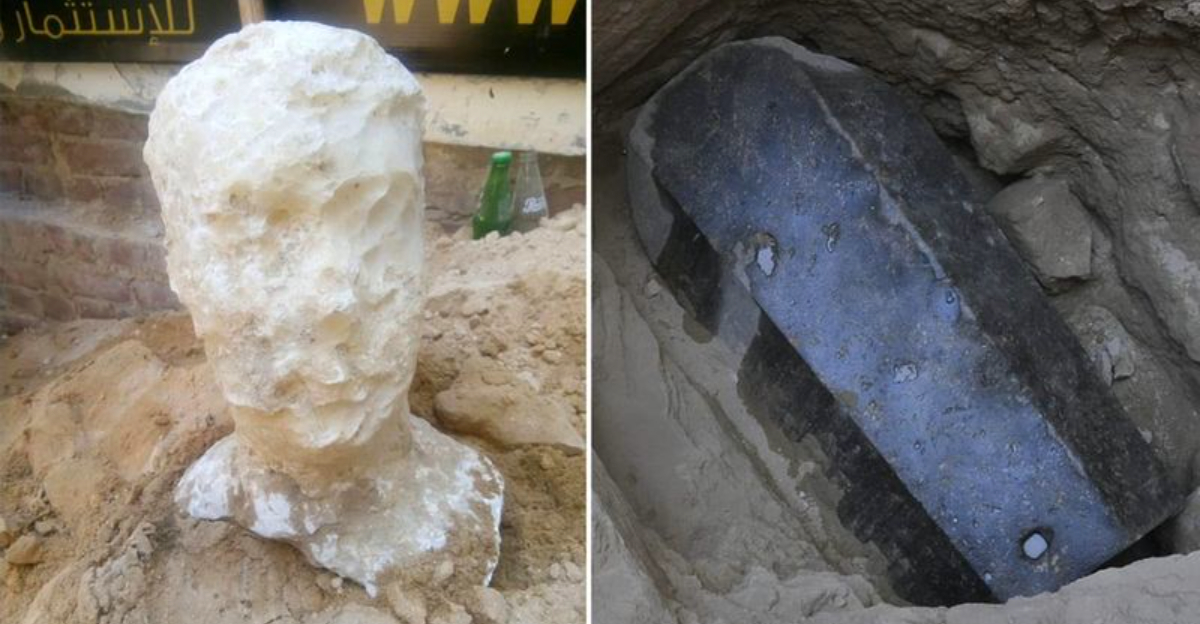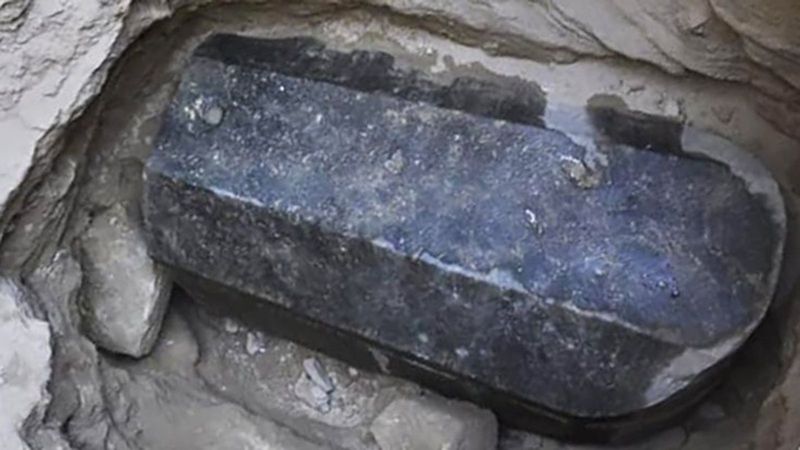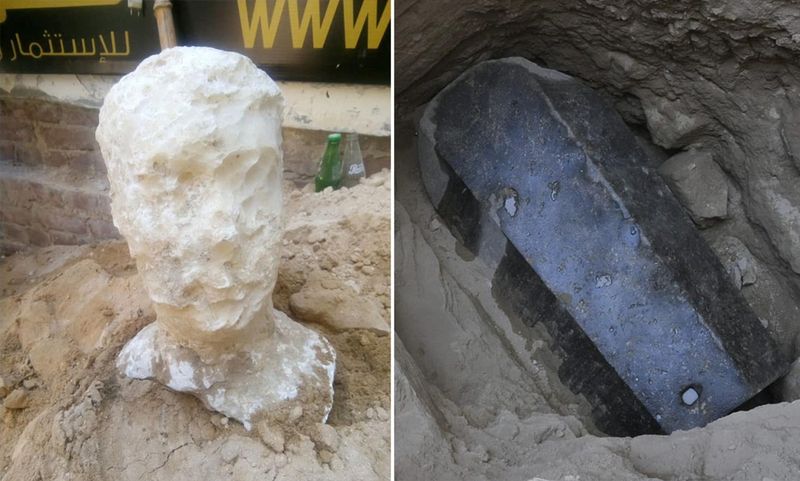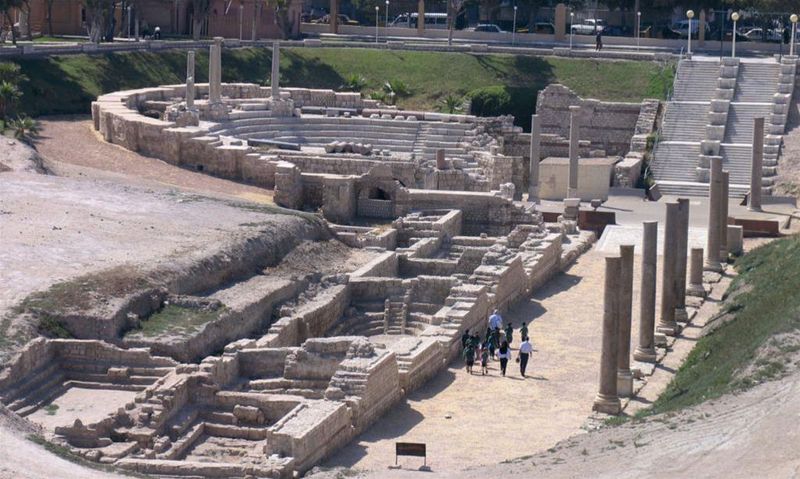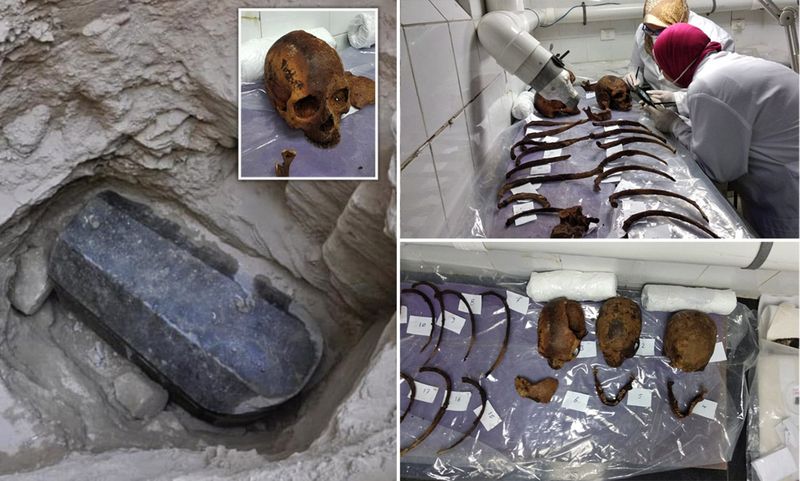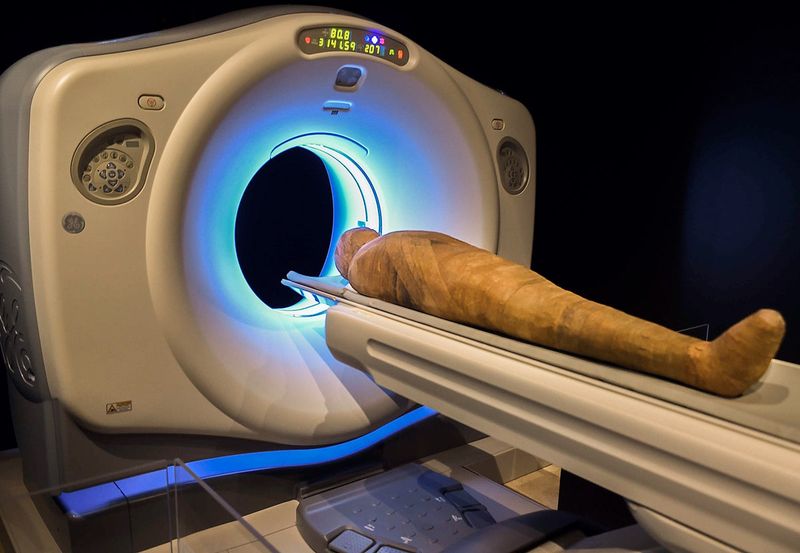In Alexandria, Egypt, archaeologists made an incredible discovery in 2018 when they stumbled upon a massive black granite sarcophagus buried deep underground. This ancient treasure measured about 6 feet tall and had been sealed shut for over 2,000 years, making it the largest sarcophagus ever found in Alexandria. The find sparked excitement and mystery worldwide, with people wondering who could be inside such an impressive tomb and what secrets it might reveal about ancient Egyptian life.
The Massive Black Granite Tomb
Weighing several tons and crafted from polished black granite, this sarcophagus stood out immediately as something extraordinary. Workers discovered it during routine construction excavation in the Sidi Gaber district of Alexandria, completely by accident.
The sheer size of the coffin amazed researchers who had never seen anything quite like it in the city. At 8.6 feet long and over 5 feet wide, it required special equipment just to examine properly. The granite’s dark, imposing appearance added to the mystery surrounding who might rest inside.
What made this discovery even more remarkable was the thick layer of mortar sealing the lid shut. Nobody had opened this tomb since it was first sealed during the Ptolemaic period, roughly 2,000 years ago, preserving whatever lay inside from the outside world.
An Unopened Time Capsule from Ancient Times
Finding a tomb that remained undisturbed for millennia is incredibly rare in archaeology. Most ancient Egyptian burial sites were robbed long ago by treasure hunters seeking gold and valuable artifacts.
This particular sarcophagus, however, showed no signs of tampering. The mortar seal remained intact, suggesting that whatever secrets lay within had been protected from grave robbers throughout the centuries. Alongside the massive coffin, archaeologists also found an alabaster bust depicting a man’s head, likely representing the person buried inside.
The alabaster sculpture provided the first clue about the tomb’s occupant. Its presence suggested someone of importance was laid to rest here, though his exact identity remained a puzzle. Researchers knew they were about to unlock a genuine time capsule from Alexandria’s ancient past.
Alexandria’s Hidden Archaeological Treasures
Alexandria holds a special place in history as the city founded by Alexander the Great himself. Once a thriving center of learning and culture, it housed the famous Library of Alexandria and attracted scholars from across the ancient world.
Despite its rich past, much of Alexandria’s archaeological heritage remains buried beneath modern construction. The city continues to grow and develop, making systematic excavation difficult and discoveries like this sarcophagus all the more precious when they occur.
This particular find dated back to the Ptolemaic period, between 305 and 30 B.C.E., when Alexandria flourished under Greek rule following Alexander’s conquest. The discovery offered researchers a rare window into burial customs and artistic achievements from this fascinating era when Egyptian and Greek cultures blended together in remarkable ways.
What Lay Inside the Ancient Coffin
When archaeologists finally opened the sarcophagus in July 2018, they found something unexpected. Instead of golden treasures or a single royal mummy, three skeletons lay submerged in reddish-brown sewage water that had seeped into the tomb over thousands of years.
One skeleton showed clear evidence of trauma—a cracked skull likely caused by an arrow wound. This injury, combined with the presence of three bodies, led researchers to believe these might have been soldiers rather than nobility. The discovery challenged initial speculation that someone extremely important, perhaps even Alexander the Great himself, rested within.
Despite the somewhat disappointing revelation, the remains still held valuable information. The skeletons were carefully transferred to the Alexandria National Museum, where experts could conduct detailed studies to learn more about their lives, health, and final moments.
Scientific Analysis and Future Research
Modern technology allows archaeologists to extract far more information from ancient remains than ever before. CT scans can reveal hidden injuries, diseases, and even what people ate during their lifetimes without damaging fragile bones.
DNA testing offers another powerful tool for understanding the past. By analyzing genetic material from the three individuals, scientists hope to determine if they were related, where they originally came from, and how they might have lived. These techniques could illuminate details about daily life in Ptolemaic Alexandria that written records never captured.
Translation of any inscriptions found within the tomb may provide additional clues about the occupants’ identities and social status. While this discovery may not have revealed Alexander the Great’s final resting place, it still contributes valuable knowledge about ancient Egyptian burial practices and the diverse population of Alexandria during its golden age.
